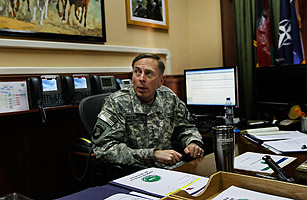
Highs: Godfather of the modern counterinsurgency doctrine, General David Petraeus is not only the American military's most recognizable figure, but its perennial fixer. So when Stanley McChrystal self–imploded in the pages of Rolling Stone and President Obama needed a replacement to take over forces in Afghanistan amidst challenges military, diplomatic and political, Petraeus was the natural choice. By the time combat operations in Iraq, where he had executed the original surge and brought a once teetering campaign back from the brink, nominally ended on August 31, Petraeus was in no place to celebrate what was in part his achievement. He was already on the ground in Afghanistan engaging another seemingly inextricable enemy.
Lows: The Afghan campaign Petraeus inherited became increasingly violent. On September 21, nine NATO soldiers were killed in a helicopter crash, marking a grizzly milestone. 2010 had become the deadliest year in an almost decade–long conflict. In December, as the Obama Administration's strategic review wound down and political pressure to deliver on the President's plan for a withdrawal beginning in 2011 ratcheted up, American efforts were dealt glancing diplomatic blows; cables released by WikiLeaks once again brought the rampant corruption of the Afghan government to the fore and the unexpected death of envoy Richard Holbrooke robbed the U.S. of one of its most powerful voices in the region. "Nothing about the way ahead in Afghanistan is easy," Petraeus wrote in an April piece for TIME. After his first six months there, those words ring just as true.
—Adam Sorensen